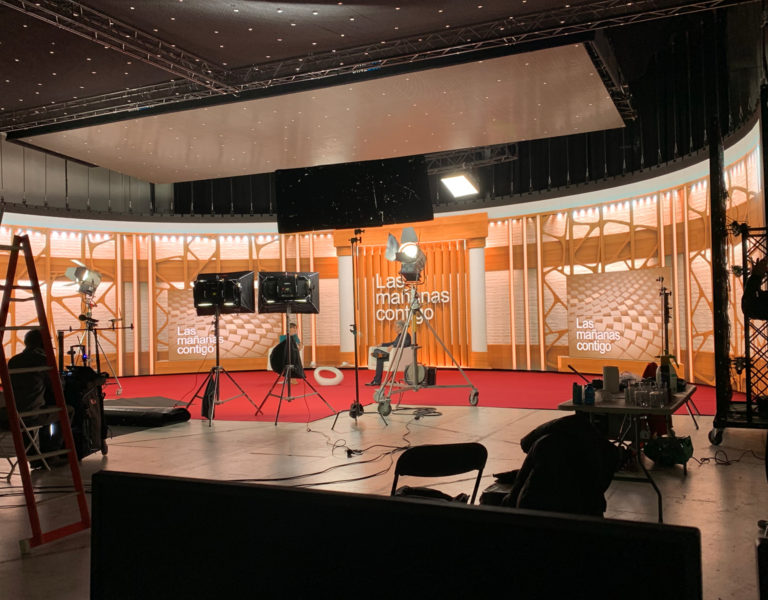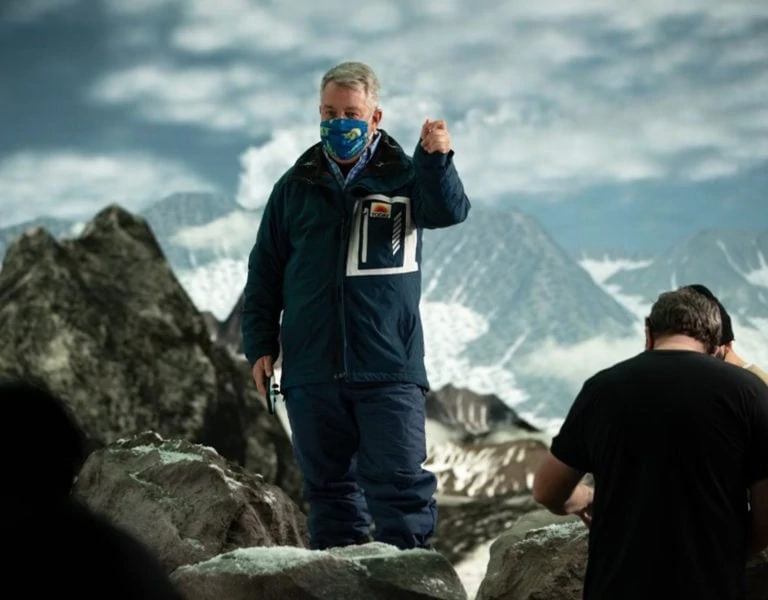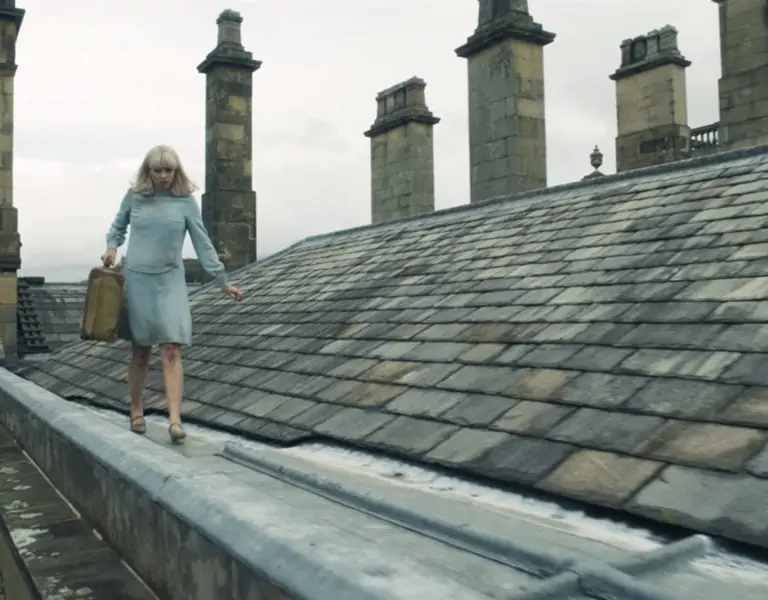In at the deep end
Amid the swirling waters of the River Tees, the cast and crew of After The Flood pulled together to shoot a breath-taking opening sequence that would set the tone for the thrilling ITV drama.
Cinematographer Phil Wood (The Bay, COBRA) is no stranger to a meaty television drama, but After The Flood presented an unusual set of challenges. In particular, a nail-biting opening sequence in a flooded river would mean combining the work of underwater camera operators and VFX specialists, as well as relying on some gung-ho stars, for success.

The ITV drama stars Sophie Rundle as PC Joanna Marshall, who becomes obsessed with a seemingly innocuous flood death. When an unidentified man is found dead in a lift in an underground car park police assume he became trapped as the waters rose, but Joanna wonders how he got there in the first place and why no-one knows his identity.
Wood had already enjoyed a successful partnership with director Azhur Saleem on a block of Doctor Who, but unlike the long-established sci-fi series, After The Flood would involve setting the look for a fresh new show and shooting all six episodes.
“It was a luxury and a unique element, having Azhur and I do the whole job together and being able to have the time to do it right,” Wood remarks. “It’s a lot of hard work, but the payoff is that you’ve got complete control of something which is brand new.”
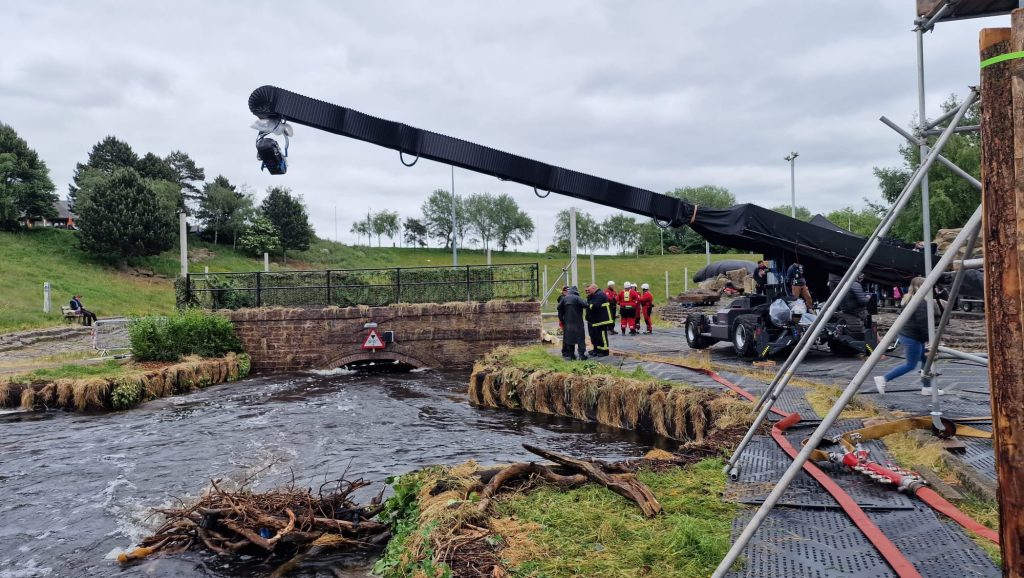
Ebb and flow
Conscious of the complexity of the project, Wood and Saleem immediately started discussing their visual approach when they joined forces in November 2022. The 10-minute opening sequence was key to their conversations. “It was a slow burner,” the DP says. “Over the six months until the shoot, we slowly started working out how we were going to do it and what level of realism we could achieve. We recced all sorts of places and had this idea of combining these two locations.”
The team had found two suitable locations: one, a real street of terraced houses in Manchester; the other, the Tees Barrage in Middlesborough. The Barrage is a controllable waterway capable of pumping 14,000 litres of water every second, used for everything from Olympic canoeing practice to flood rescue training for the emergency services.
“It’s basically a concrete waterway where you can turn off the water and within five minutes you can walk around in it,” Wood explains. “Then, you can turn the water back on and open the gates, and the water comes flowing down. Effectively, you’ve got a torrent of water flowing past. It’s not very deep, but it is cold river water.”

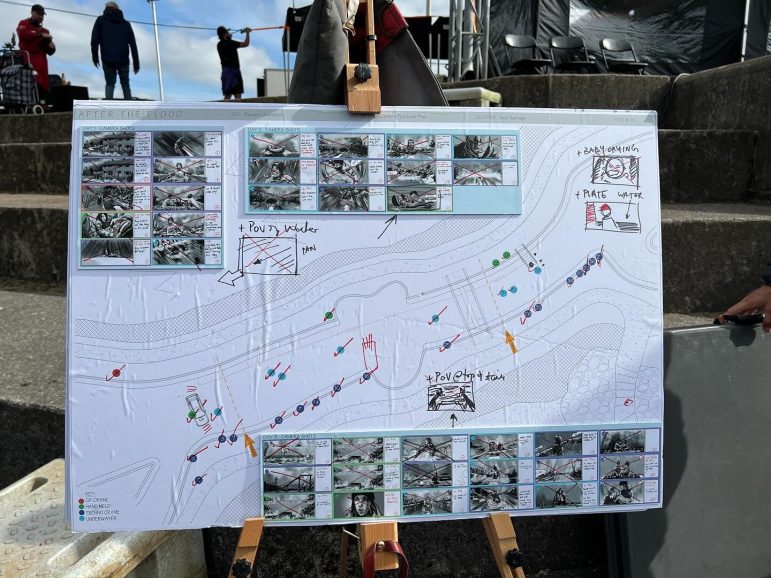
Vine FX stitched the two locations together. Wood explains: “We did a lot of double exposure shots; for example, we’d shoot the real street of terraced houses in Manchester as a plate with our cast walking through, then we’d replicate that exact same shot, with the same angle, lenses and everything, out in the Tees Barrage location.”
As Wood and Saleem were working on the whole series, they decided to move the shooting of the opening sequence to the very end of principal photography, allowing them more breathing time to do camera tests and a number of technical recces. He remembers one recce during a hiatus which involved 40 crew, including A-camera focus puller Neil Bradley and the grip and drone teams. To help prep, Steven Grainger’s art department created a 3D model of the barrage.
“Every single shot was plotted and broken down to the point where we knew exactly what piece of equipment was needed for that shot,” says Wood. “That was the only way to get through it.”
They had three shoot days at the barrage, involving six to nine shots a day. “But each was like a big set piece – turning on fire hydrants of water to fall on the cast, having operators in the water and camera cranes flying around.”

Making sure the sequence was as believable as possible was crucial for director and DP; that included using real rain as much as possible. “You need the best possible waterproofs – wetsuits and waders were the best because it was torrential most of the time!” Wood recalls with a smile.
To up the authenticity, they hired Rob Hill and his specialist camera team for the water work so they could get close to the actors during the dramatic scene. It was a three-camera set-up: Hill in the water, Wood operating a 50-foot Supertechno crane with underwater housing on the end controlled by key grip Chris Hughes, and operator Mark McQuoid ACO on the wings of the set capturing more specific shots. “Because the crane camera had this special housing, we could duck it under the water, so we had these amazing tracking shots,” the DP remembers.
Crucial to the success of the scene was Sophie Rundle and co-star Jonas Armstrong’s willingness to do their own stunts. “Everyone got on board the project and everyone said, right, if we’re going to do it, let’s do it. Obviously, the safety’s there; we do all the training, divers are in the water with us, and everything had been thought about and planned. But they could easily say for those shots, there must be a double. Both Sophie and Jonas said ‘Nope, we’re doing it.’”
During the flood sequence, a baby is swept away in the waters. It was a fun challenge for the team at Vine FX to work on, as VFX producer Kaitlyn Beattie explains. “The baby was a cast actor,” she says. “It was an interesting shot for us to work on because we had a prop baby in a carrier filmed on location and then needed to match the exact expressions and facial dimensions of the actual baby.”
To accomplish this, Vine FX turned to compositing software NUKE and some AI-powered tracking plugins. Achieving an accurate 3D track of the prop baby proved challenging, with water and other practical elements often occluding the carrier and hindering the track.
“We needed to strike a balance between relying on the tools and bringing in some manual control,” says lead compositor Vahik Asoyan.
Rather than relying on a digital double, the Vine FX team chose to film the real cast baby, capturing its expressions – including some crying – from multiple angles in order to create a believable look in the finished shot. “This really helped to ground the sequence,” adds Asoyan. “Choosing between when to do something practically, digitally, or mix the two is where a lot of the craft comes in.”
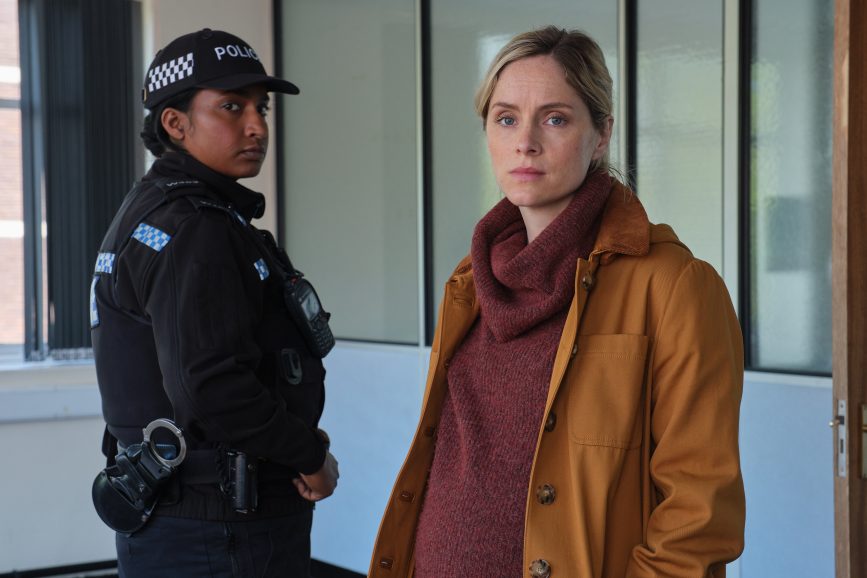
Fun with formats
The Sony Venice was paired with Canon K35 vintage primes for their soft and warming look. Wood chose the Venice because he wanted the ability to go from 35mm to large format in a creative way: using the camera as another creative tool. He explains: “80% of the show is shot at 4K with a 35mm sensor, but we deliberately pushed the camera up to large format for those moments to make Sophie feel bigger in those particularly heightened story beats. Suddenly, the depth of field is shallower, the frame feels taller, the quality and sharpness are slightly increased. The opening sequence is all shot large-format because we wanted it to have that cinematic wow factor.”
Wood did some early-stage water tests at “brilliant” rental house No Drama’s Matt and James at their Salford base, exploring shutter angles. “We knew there would be a lot of rain involved, so it was about how can the camera replicate rain? As crude as it sounds, we just got buckets of water and watering cans and were just pouring water. We’d shoot at 50 frames with a 180-degree shutter, then 50 frames with a 90-degree shutter.”
What they found when adjusting to 90 or 45 degrees was that the rain became almost too defined, which felt distracting. But at 180 degrees, the rain was a little blurry yet still sharp, with a nicer, more filmic quality.
He and Saleem also liked using slow motion to aid the visual storytelling. “There’s a shot where Sophie sees the mother and baby for the first time (in episode one) and we shot that at 50 frames.
“I quite liked to use 33 frames as well, which is a weird one as it doesn’t look like slow-motion when you play it back. But it slightly heightens the blinks and slows down time.”
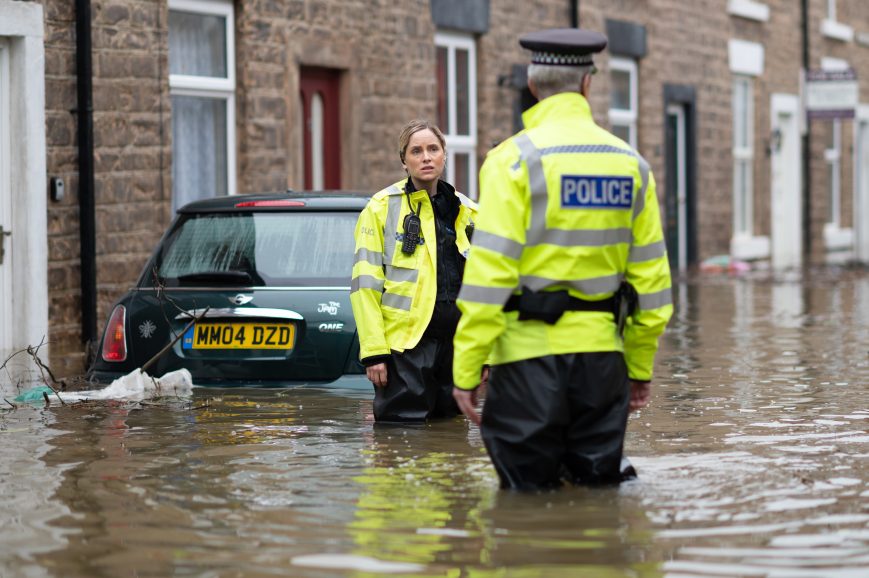
To keep the camera free of drips when doing water work, A-camera focus puller Neil Bradley used an air jet system which combined a diver’s compressed air bottle with a pipe running to the camera which instantly cleared the lens.
Another useful tool was the ZeeGee gravity head, which Wood had first encountered and loved while shooting in New York in 2021. He compares it to “the best parts of Steadicam, but with a handheld feel”. It wasn’t available in the UK at that point, so the only way to have it was to purchase it and ship it over. After the Flood was one of the first UK dramas to use the ZeeGee system on set. “We didn’t rely heavily on it, but we found ourselves using it more and more once we knew what we could do with it. Our executives didn’t want this to feel like a handheld shoot, so this piece of equipment stabilised the steps but still gave me, as the operator, the freedom to get that handheld look in terms of the slight movement of the frame.”
The ZeeGee came in especially handy when filming a flooded street. On a derelict patch of land near Manchester’s Trafford Centre shopping precinct, the production team built a 360-degree set featuring a water tank in front of a terraced street. Vine FX took the flooded tank plate and built 3D geometry around it – all based on a real village.
“We came up with this idea of having a boat and using it as a dolly [in the flooded street]. I’d either have the ZeeGee attached to me or fixed within the boat, so it felt like a floating rig. It wasn’t on my shoulder and I didn’t have to walk through the water so it allowed me to concentrate completely on the frame. We got some really dynamic moves with the ZeeGee and the boat that just wouldn’t have been possible without that combination.”
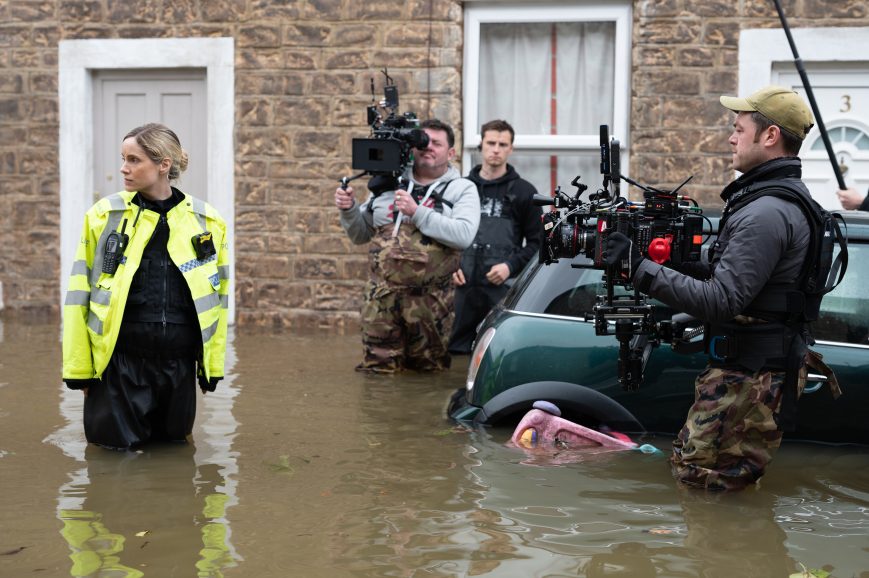

Night light
The series involves some big night sequences, including one at Knowsley Park in Liverpool where Joanna’s mum, Molly (Lorraine Ashbourne) is knocked off her bike by a car. This meant using a Bickers Action bike rig, with Wood and his team filming from a tracking vehicle.
Using kit from Sunbelt Rentals, gaffer Jon Best and his team used multiple Wendys to light the sequence in layers. “As we’re driving, Lorraine’s character is going into these different pockets of our lighting,” Wood says. “The effects team, Quicksilver, lined the road in this park with lots of rain bars, and we backlit the rain so it was bouncing off the road.”

To mimic the car hitting the bike, Wood and Best used some old tungsten parcans on a rig, so that as Molly is cycling along, it creates the impression of car headlights getting closer. “We had them on dimmers and rotated them in to convey the idea of the car getting closer. The stunt team were involved for the moment of impact, but then we had to cheat the idea of the car driving away. So, we had these red brake lights on a dimmer system. With a bit of artistic licence, we have the red car lights fading away off-camera so when the scenes are combined together, you get the sense that she’s cycling in the moonlight, the light hits her face, you see the action, then it fades away.”
Another tricky lighting setup was making the stormy Tees Barrage sequence look overcast. Filming in early summer 2023, Wood and Best were faced with the problem of flagging the sun over water. The first part of the sequence had been shot in Manchester with cloud cover, so they needed to keep that consistency.
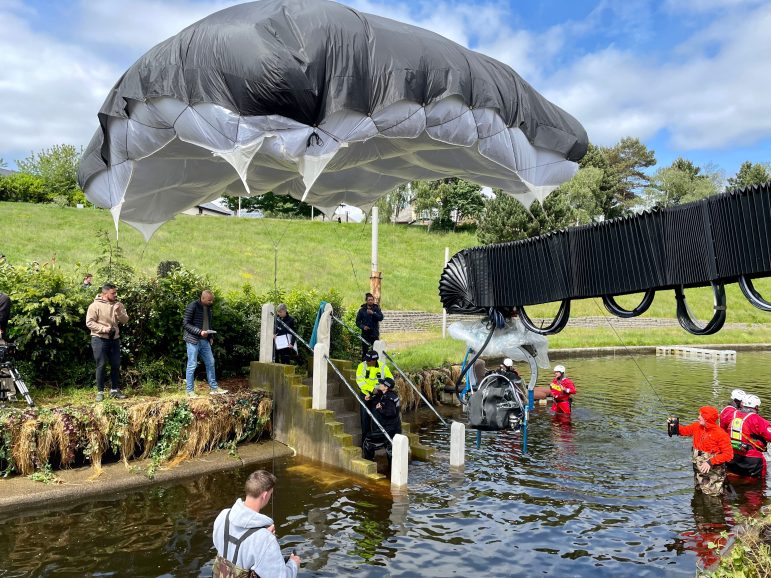
Wood remembers: “We found what was almost a helium balloon light – but rather than being a light, it was a floating flag. We combined the two together, so it was 40 by 20 feet. A specialist team came in and floated this flag like a cloud above the cast.”
A giant blackout silk above the cast provided negative fill, taking away direct sunlight and reducing the ambience down. “It was one of those moments that’s about problem-solving – you’re limited with what equipment you can get out there,” he adds.
The DP admits that it’s rare to work on a show that’s as enjoyable as After The Flood, despite its sombre subject matter. “Also, everyone in it goes above and beyond to give the most to the project and I think that comes across. Hopefully it feels a little unique as a drama,” he summarises.
After The Flood is available to watch on ITVX.

